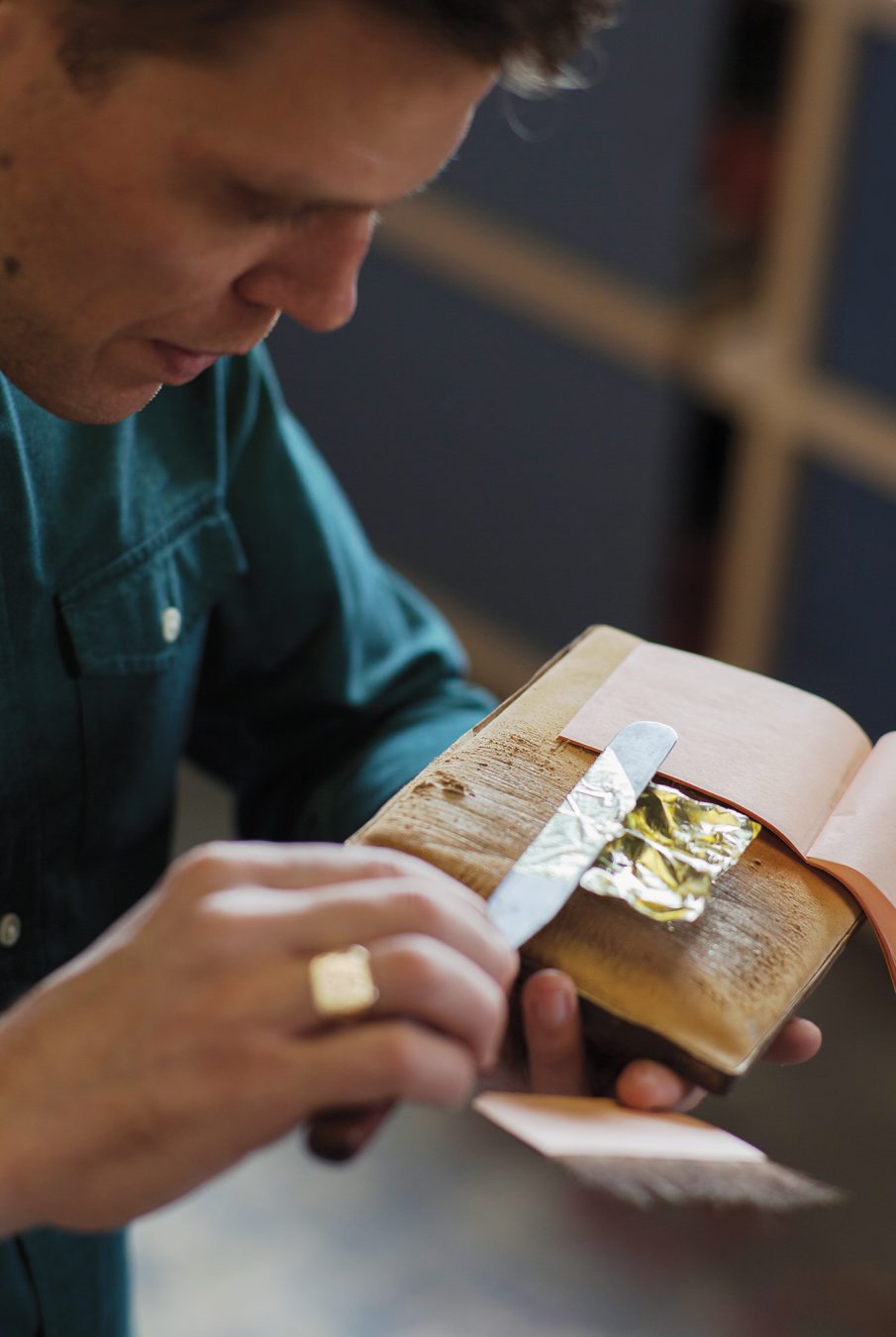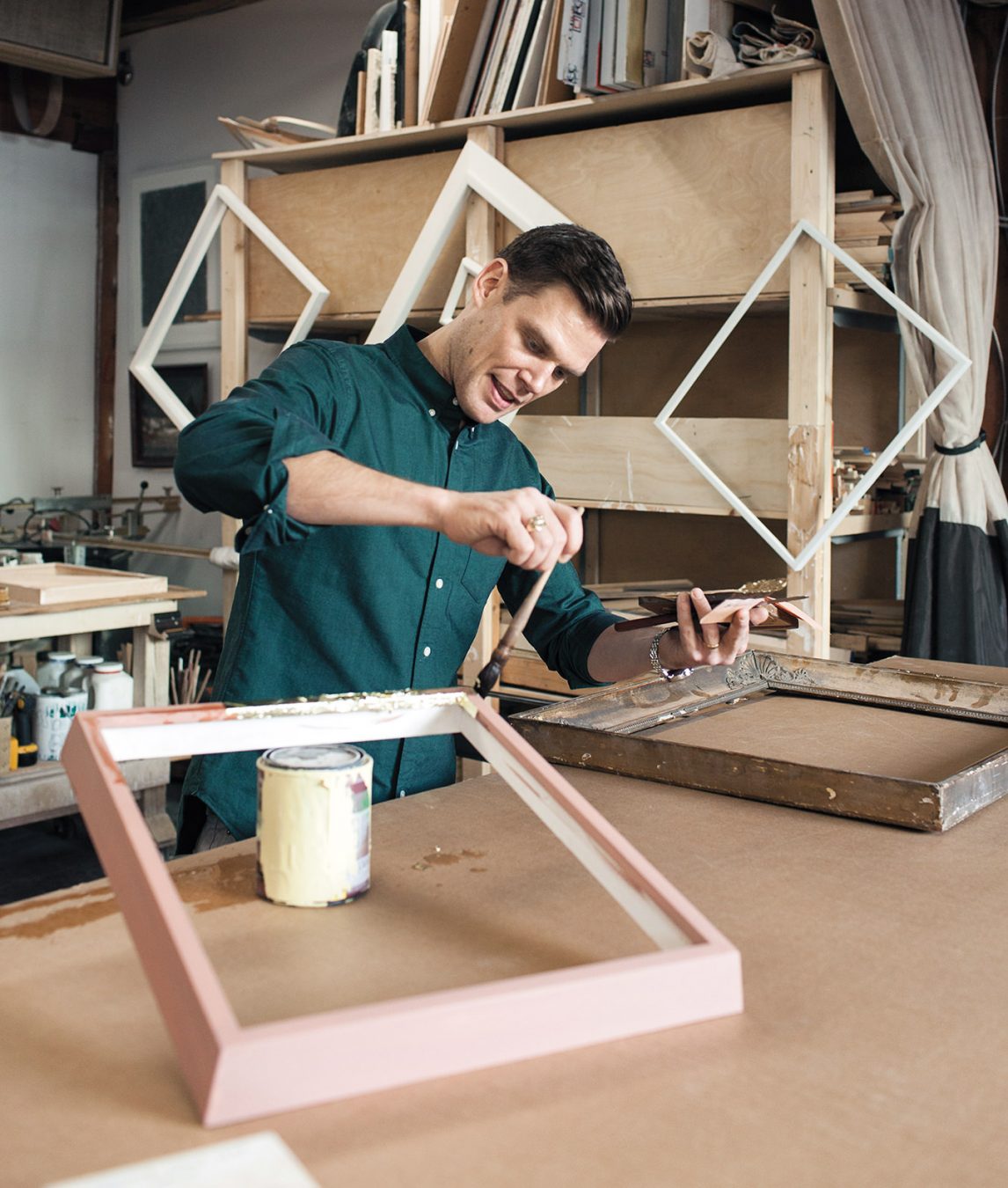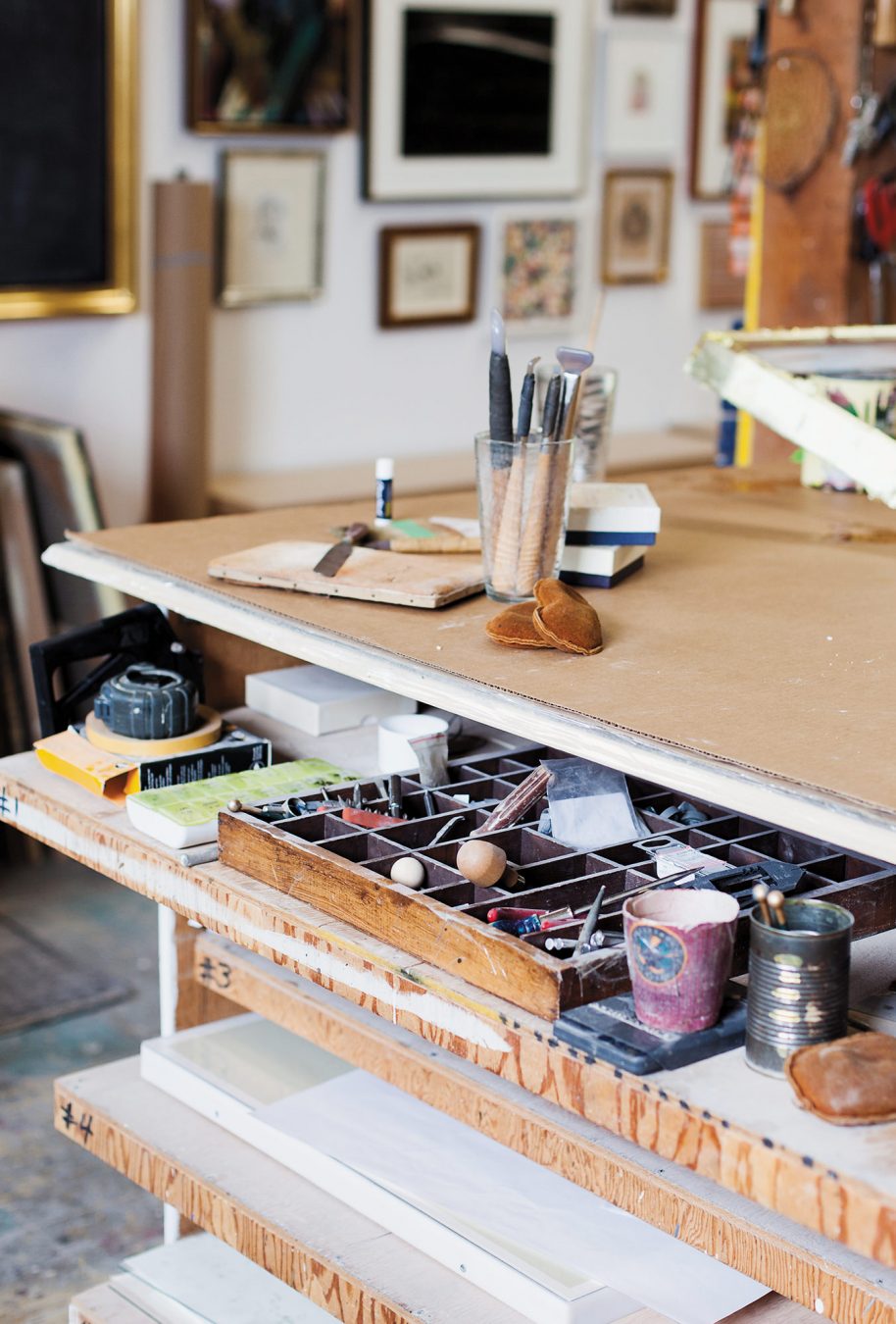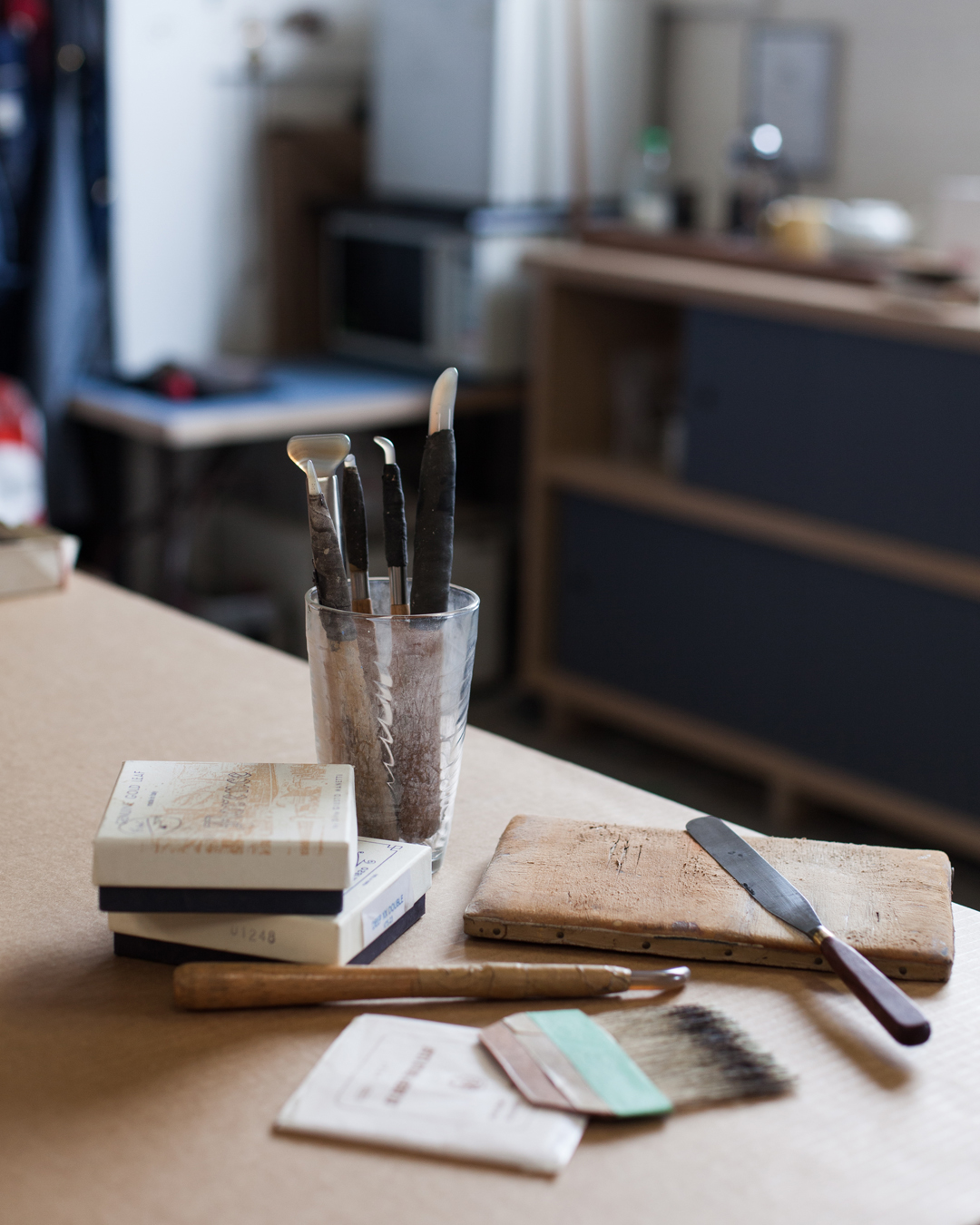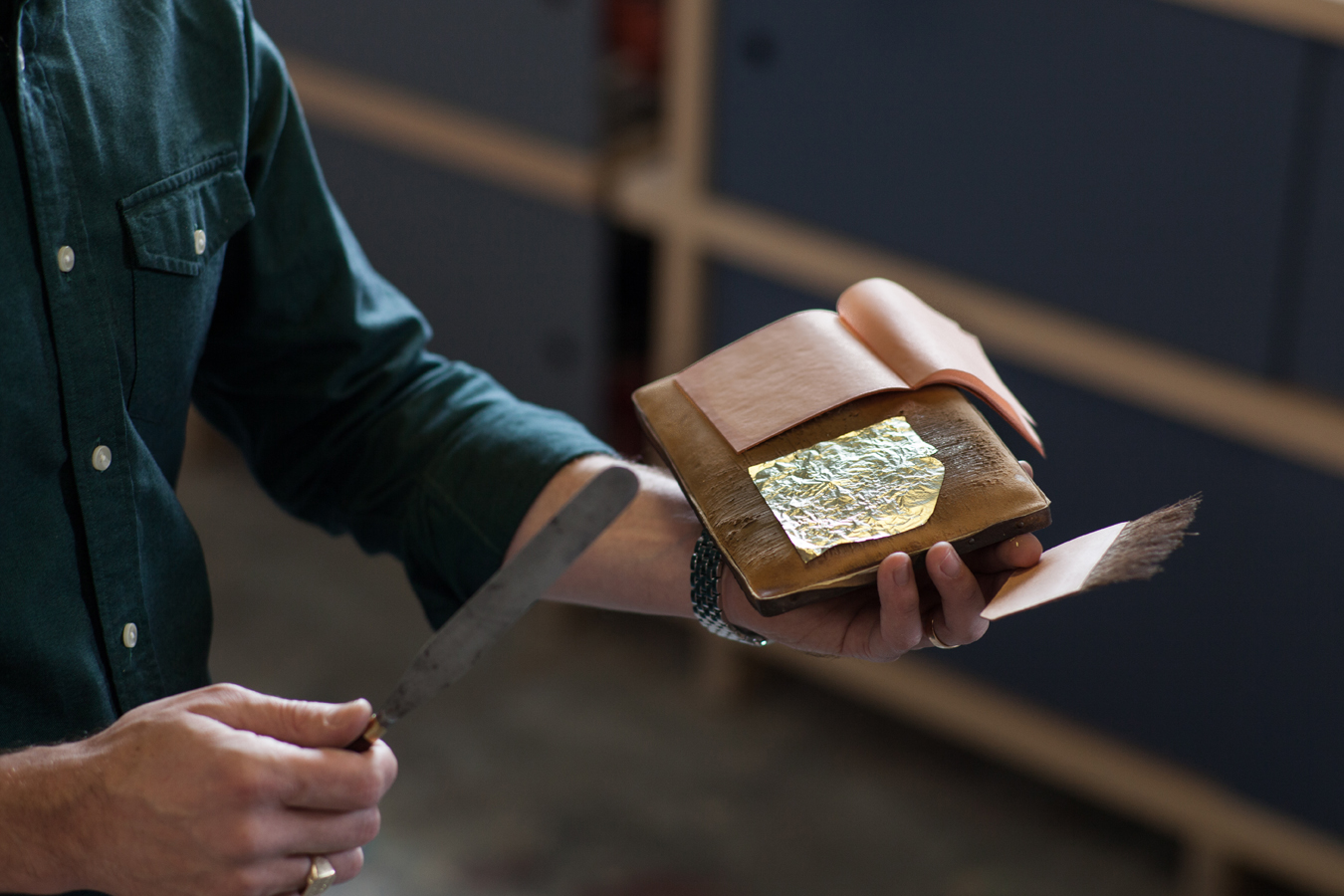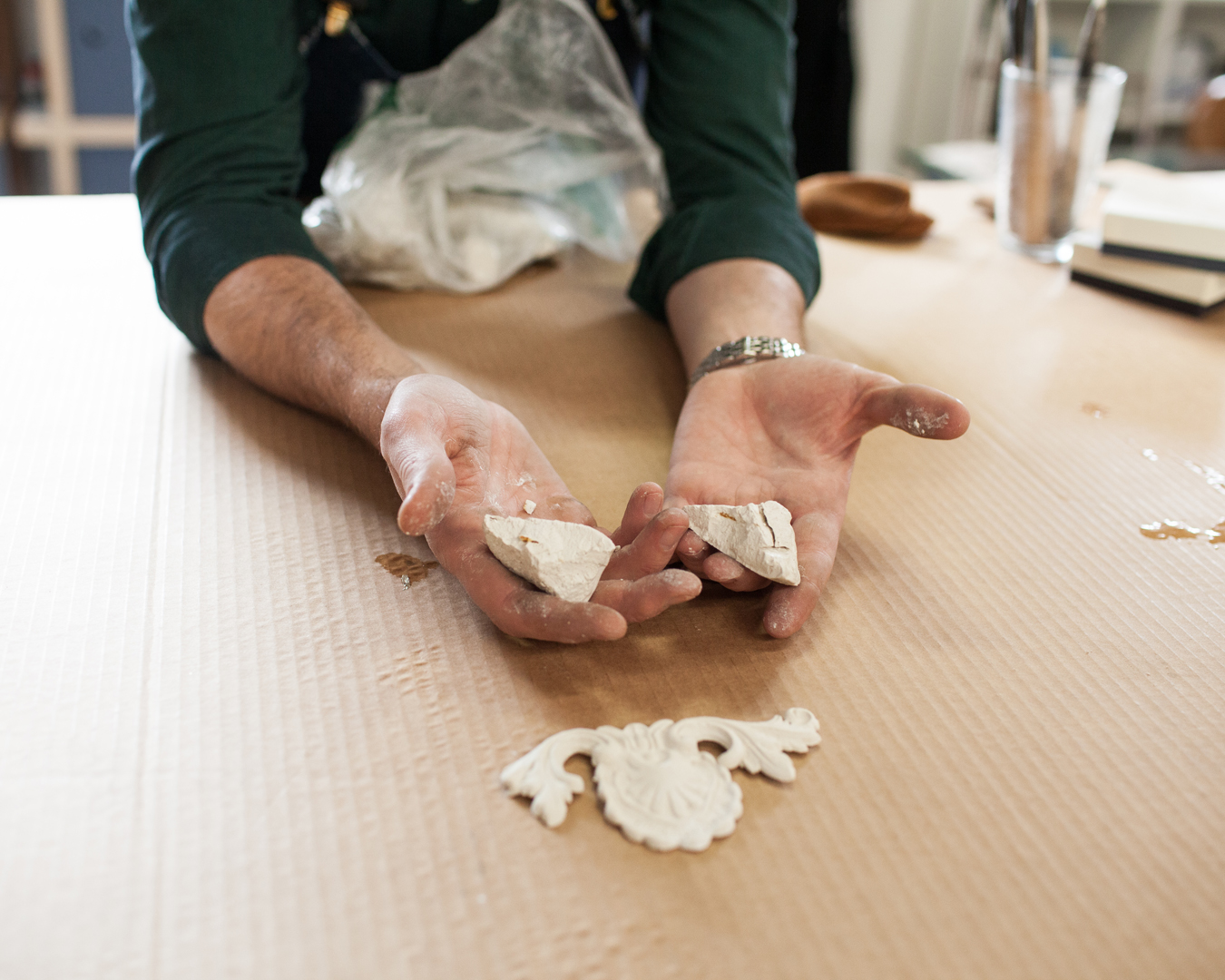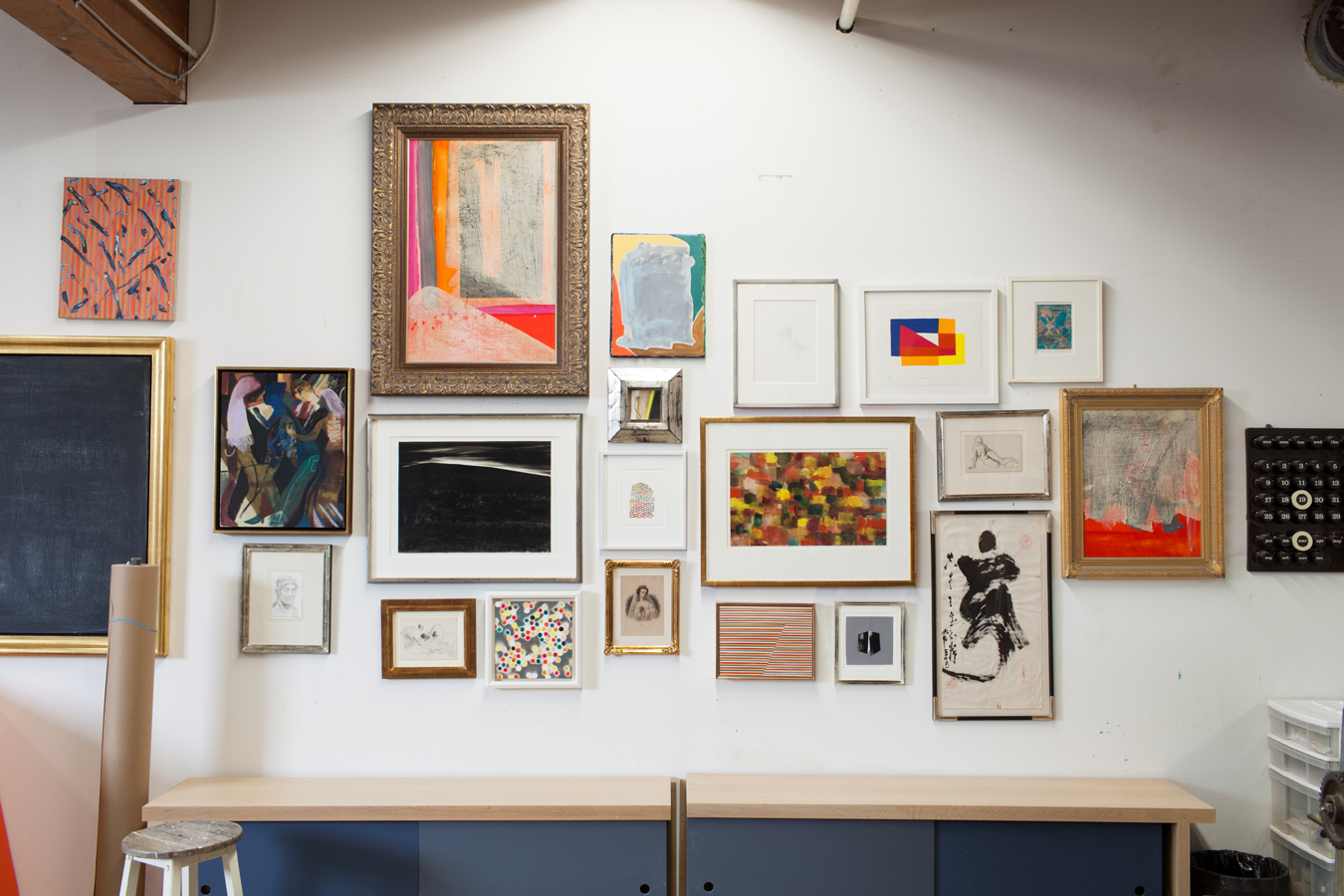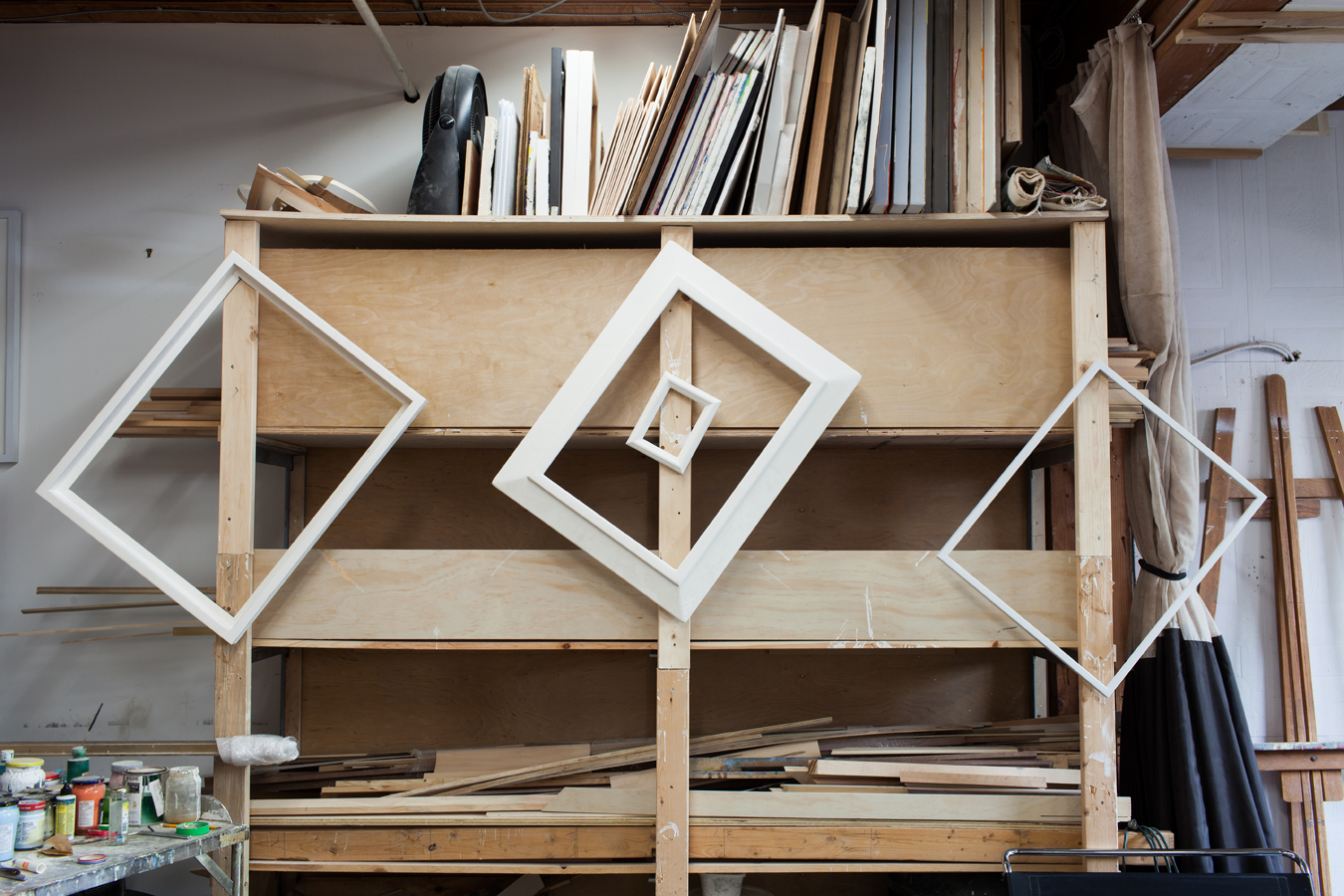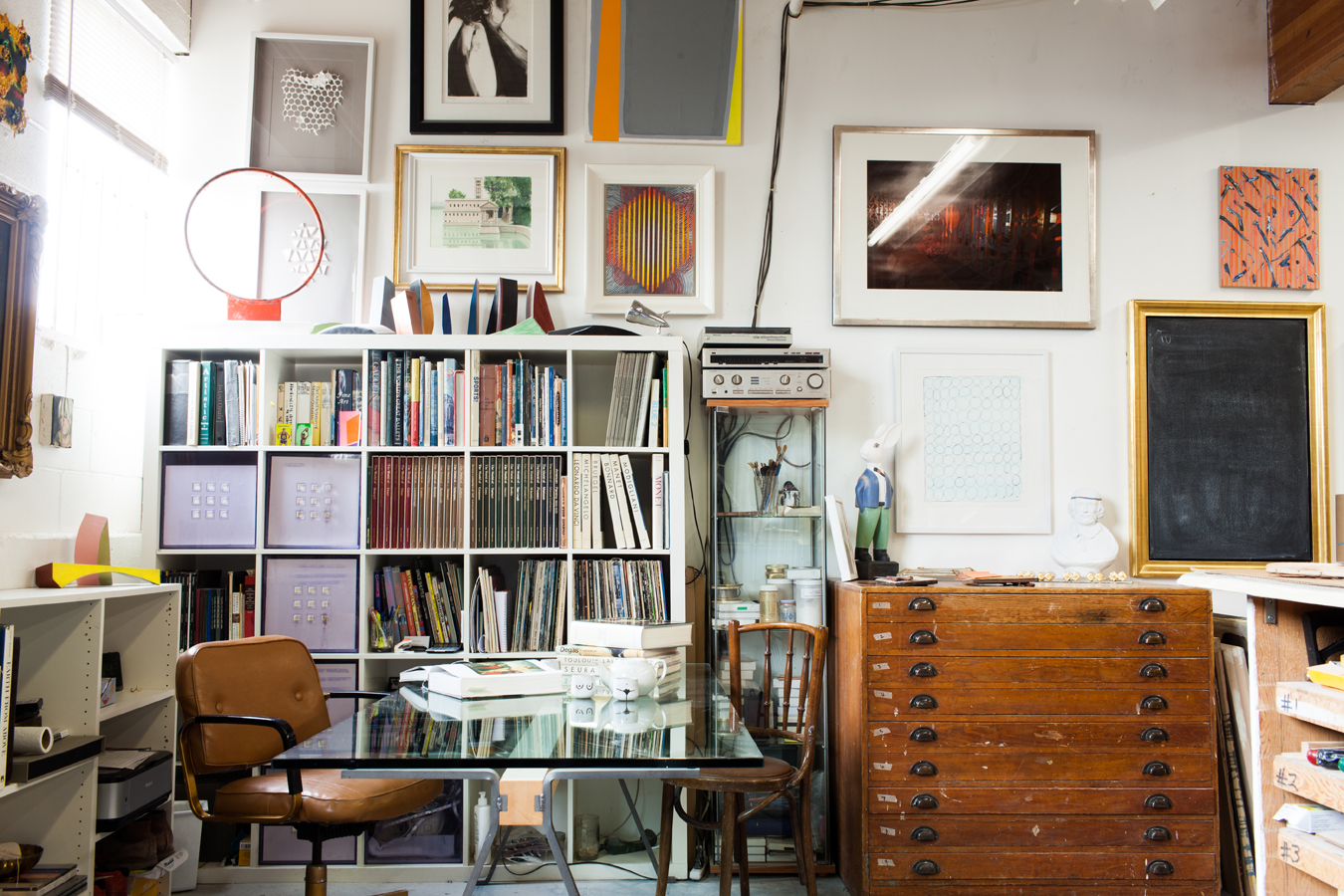Entering Jonathan Syme’s gilding and framing studio, which operates under the moniker The Workshop, a particularly sentimental heart may skip a beat. Modestly tucked away in the bellows of East Vancouver’s industrial area, the studio is an artisan’s oasis. On the southern walls hang Syme’s own colourful, hard-edge geometric paintings; to the left are his wooden workbenches, cleared for the next project, with his gilding tools and gold leaves carefully stowed away in a sparkling glass case. It’s an idyllic scene, a subsequent virtue of a carefully laboured craft.
Walking towards his glass case to gather his assorted tools, Syme suggests a demonstration. At his workbench he pulls out a frame prepped with traditional gesso made out of rabbit skin glue and chalk dust topped with clay. Opening his leather-bound case, he picks out a small, flat, bristled tool and waves it across the top of his cheek, lightly greasing the tip of the brush. “I think people used to be greasier,” Syme laughs, applying a bit of lip balm to the top of his cheekbone. The leather book is opened to reveal a shiny square of gold leaf, and he picks it up delicately with his oiled tool. Placing the leaf onto the frame, he then washes it with gilding water, which he ominously clarifies as “water, alcohol, and some secret stuff.” The gold leaf is left to dry overnight, allowing it to adhere and seal to the porous clay underneath. Syme polishes the leaf with slightly hooked agate stone, its shape resembling the wolf’s tooth that was traditionally used.
“We all have our little treasures.”
Syme began gilding eight years ago, when veteran gilder and The Workshop founder Brian Dedora took him in as a very green apprentice. A relative tabula rasa, the intricacies and skills passed down for 1,000 years were all new to Syme. “When I first started working with Brian, I picked up a cheap ornate frame and I asked, ‘What’s the difference between this frame and this frame?’” he recalls. “And this other frame I was pointing to was like 18th-century, hand–carved, water gilded, beautiful craftsmanship. And that was like my first week of working with Brian. So eight years later, it’s all pretty apparent why.” Since Dedora’s retirement in 2010, The Workshop has been a solo project for Syme, who expertly gilds not just frames, but also historic and contemporary interiors and cherished items both new and old.
Through his apprenticeship, Syme learned water gilding—a more laborious and complicated process than its more relaxed but less brilliant cousin, oil gilding. “Water gilding is sort of the height of the craft, it’s the most detail reliant,” Syme explains. “It’s also kind of the most heartbreaking in the way that you don’t know for sure that everything is done properly until everything is finished and you’re burnishing—which is after you’ve laid down the gold, and the next day you polish the gold with agate stones.” The process requires an astute dedication to detail, as well as knowing when to let go. “All these little idiosyncrasies are what make the trade. There will be little breaks in the gold, and some people try to fill those in, and you get a strange kind of stamp shape where you’ve made the repair,” says Syme. “As long as those [breaks] have a continual flow around the frame, they make their own contribution. It’s an indication that it’s a handmade object. And that’s a really beautiful and rare thing.”
After burnishing, water gilding takes on a brilliant shine that is sometimes a bit too vivid for the encased antiquities. Therefore, the final finishing requires more than a deft knowledge of the material. “That’s the instinct part of it,” Syme says of the antiquing process. “Sort of having enough knowledge of finishes and enough skill to pull them off that you can decide per painting, per artwork, what is best.” It’s a job Syme is particularly adept at. One work, a framed portrait of a beloved cat, is completed with a soft fuzzy texture, mirroring fur. Another, a 16th-century tiger lily lithograph frame, is finished with splattered black specks called “fly-fleck” that mimic the droppings left by black flies resting atop the piece over centuries.
Each item laid on Syme’s bench is treated with equal consideration, equal reverence. “We all have our little treasures,” he says. There’s a certain amount of restraint needed when working with precious metals—especially gold. A heavy hand is in danger of outshining the treasure it surrounds or covers. As Syme explains, without a glimmer of irony, “in the end it’s about the work of art. I don’t need to make a trophy.”
_________
Read more from our Design section.

